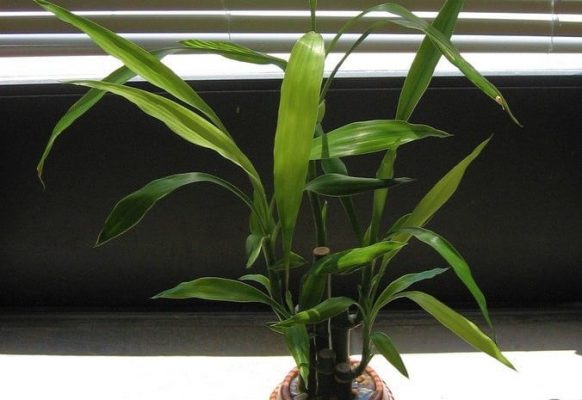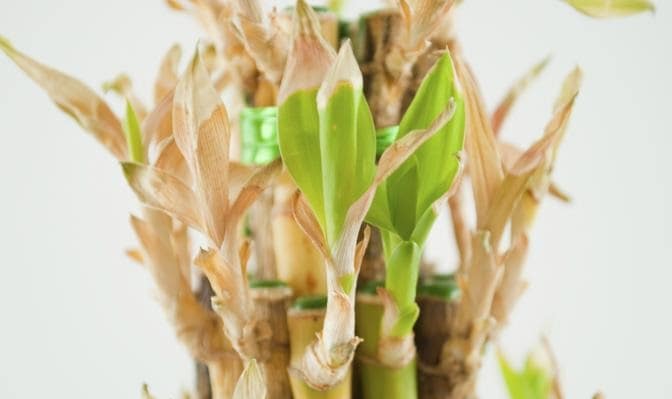Plant Care
Everything You Need to Know About Lucky Bamboo Plants
Lucky bamboo is a simple plant that can flourish in water or soil. While it is commonly known as the bamboo, it isn’t a real species of the bamboo plant and has a place with the dracaena variety, though their stalks are similar.
What is a Lucky Bamboo Plant?

Origin: Africa.
Botanical/ Scientific Name: Dracaena Sanderiana / Dracaena Braunii
Common Name: Lucky Bamboo
It can grow up to a maximum height of three feet.
Noxious for pets? Still unknown.
This bamboo plant (lucky bamboo) grows in West Africa; its native location can be as high as 5ft (or considerably taller), and as an indoor plant can grow roughly around two or three feet. This plant has different varieties, and the most fascinating is the contorted stalk types prepared by pro growers.
Its thought that the Chinese who practices feng shui have named this plant as ‘lucky’ and trust that this plant is the cause that brings favorable luck into a home or working environment.
Keep these plants in soil or water?

The best place to grow the plants or Dracaena braunii as it is known is in a soil-filled pot where they live longer; however, its also possible to grow them in jars (glass-type), giving them a really cool, moderate look. You can also find them in aquariums where they are grown too, and in pet shops where they are sold, here they are put in water or a few shoots simply over the water, yet this isn’t the right method to grow these plants, and it can cause them to rot.
Blooming:

In their common tropical living space grown outside, this bamboo plant will blossom; however, grown inside, they won’t.
What it looks like:
The vast number of these plants are available for sale with around three stalks having fundamentally the same look like natural bamboo plants (though they are not real bamboo) and grow as shoots having a light green color with thin and long curving leaves. Likewise, you can buy the plaited type with various stems that appear to be more affordable as of late.
Simple to maintain:
This bamboo plant is notable for being very simple in terms of growing and maintaining. If you grow them in water, you can leave them for half a month without any health-related issues, though you need to supplant this water regularly. To grow and keep up a decent solid plant, it is recommended to grow inside a pot containing soil.
Caring for Lucky Bamboo:
Temperature:
The room temperatures should be warm or maybe more, and the recommended temperature is sixty-five degrees (F) or eighteen degrees (C) to ninety degrees (F) or thirty-two degrees (C). Evade temperatures that are lower than fifty-five degrees (F) or twelve degrees (C) during winter.
Light:

In its familiar environment, this lucky plant grows underneath the front of concealed trees, ensuring you are placing in a brighter spot where there is no direct daylight, which can consume those leaves that can imitate their common space for living.
Putting water:

In a jar or pot (water type), replace the water once a week, with purified or filtered water. If the dracaena braunii you have is developed in the soil (which is its characteristic method of developing), water the soil once so that it turns out to be somewhat dry while touching.
Soil: A well depleting potting soil blend is recommended.
Potting again:
It is recommended to re-potting a plant grown in soil when kept in a pot permanently or every two years. If you have placed your plant in water with stones at the base for firmness, place it in a pot which is bigger once the past one becomes excessively little and when the rocks and compartment requires to be cleaned. When you clean the water compartment, it will forestall microorganism’s issues.
Humidity:
The humidity inside a regular room is ok.
Propagation:
Pick and chop the shoot (or shoots) accessible on a stalk, which is the biggest, and eliminate the shoot’s lower leaves. Chop the shoot off around one to two centimeters away from the stalk. Place the stem in water for around three months until the roots show up and then pot them in the soil.
Prune them:

Trim the shoots back some inches from the stalk, and it will enable the lucky bamboo to grow into a bushy plant with a pleasant look. If there are too many offshoots, you can scale some back close to the stalk. Try not to cut stalks.
Common Problems in Caring for Lucky Bamboo
Yellow or earthy-colored edges of the leaf:

The conceivable reason can be an excessive amount of synthetic concoctions (chemical compounds) in the water (chlorine, fluoride, etc.) or direct daylight. If the plant isn’t facing direct sunlight, then the issue must be water compound, in which case, you should remove the old water and utilize purified water.
Likewise, ensure you are not excessively feeding with compost/fertilizer because of which the leaves can turn to yellow shades. Searing of the leaves can likewise be brought about by dryness in the air, which is possible to overcome with incrementing the stickiness or humidity.
Stalks getting delicate and additionally yellow:
The stalks’ base can turn out to be yellow or delicate and soft for an assortment of reasons; however, it’s frequently because of water. The truth is this stalk is now dead or close to death and should be isolated from different stalks and discarded. Eliminate this stalk immediately, so it doesn’t influence solid stalks.
